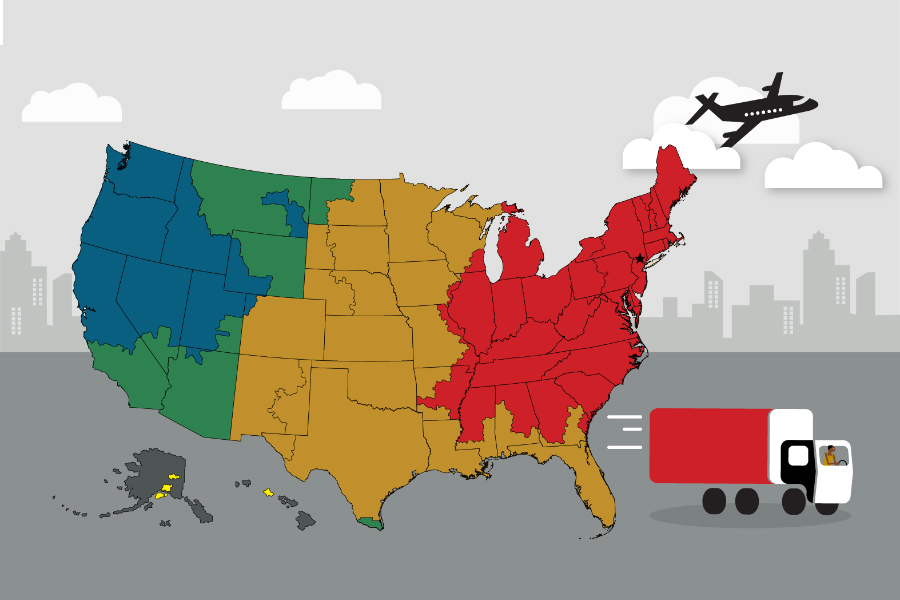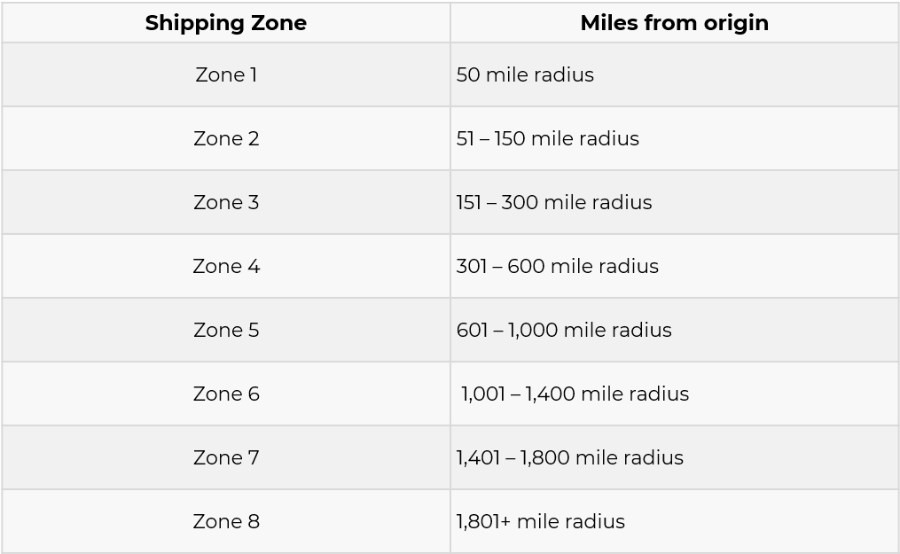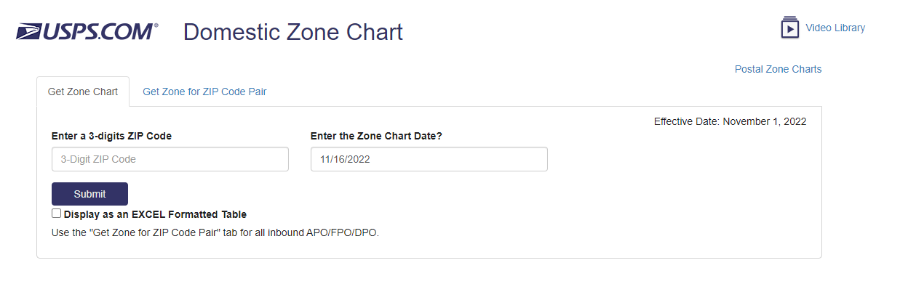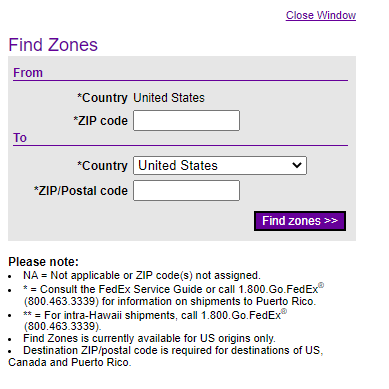Logística de Transporte
Industrias

Updated 5/29/24
E-commerce brands are always looking to perfect their order fulfillment strategy. Whether it's offering free shipping or promising two-day delivery, the goal is always the same - to keep customers happy.
Why? Because happy customers are loyal customers. And loyal customers will come back to their favorite brands again and again. Plus, they'll convince others to as well!
While we hear quite a bit about shipping speeds and delivery times, an important factor in how quickly and seamlessly a package makes its way to a customer's doorstep is the shipping zone.
Shipping zones are more than just guides carriers can use to determine the distance a package travels. They have a direct impact on shipping costs, delivery times, and the indispensable customer experience.
Let's dive in!
Shipping zones (also known as postal zones) are geographical regions grouped by zip codes that carriers will deliver to. Shipping zones allow carriers to calculate the distance that packages need to travel from point A to reach point B.
Spanning from Zone 1 to Zone 8, shipping zones are grouped by zip codes within a certain mile radius from the package's origin:

Shipping zones are determined by the distance traveled between the origin zip code (Point A) to a final destination zip code (Point B). Therefore, they are unique to each order depending on where the package has come from and where it's going.
For example, a USPS package shipped from Nutley, NJ (07110) to Los Angeles, CA (90002) would fall within shipping zone 8, since it's traveling upwards of 2,000 miles. But if that same package was shipping from NJ to OH, it would only cross a handful of zones, falling within shipping zone 4 and clocking in only about 550 miles.
Did you know that over two thirds of customers are more likely to buy an item if free shipping is included? If an e-commerce business isn't offering free shipping, their customers are more likely to abandon cart with over half of consumers leaving checkout due to extra shipping costs.
While free shipping is a surefire way to reduce cart abandonment and boost customer satisfaction, it can become quite costly for brands - especially if they're footing expenses for packages crossing a number of shipping zones. Having a well-planned order fulfillment strategy that targets lower shipping zones can help brands to maximize profit margins on all orders.
Between Amazon making rapid delivery speed the norm and technology delivering instant gratification every minute of the day, e-commerce brands have been navigating through higher customer expectations than ever before. In 2022, 61% of consumers are willing to pay more for same-day delivery.
While shipping zones are mostly used by carriers to determine pricing, they can give brands an adequate picture of how long a package will take to be delivered. A package crossing 7 zones will likely take much longer than a package crossing just one zone - unless the customer opts for express options like overnight or two-day delivery.
E-commerce brands can use shipping zones to develop their overall fulfillment strategy. For example, if they find that most of their customers are in just a few states, it could be beneficial to choose a fulfillment center that's strategically located in proximity to these high-volume zones. The results? A lower shipping cost.
No matter the shipping zone or carrier, dimensional weight is a constant pricing variable used in e-commerce. While it's typically thought of regarding bulky, large products that come in even bigger boxes, it applies to smaller packages as well.
Carriers are more frequently switching to DIM weight across the board so they can charge for space rather than weight as a way to make sure they aren't losing money on smaller parcels. This means that e-commerce brands will need to make sure that their package dimensions are as concise as possible in order to avoid extra shipping fees on top of carrier zone fees.
While there are a standard set of 8 shipping zones in US domestic shipments, each carrier has their own particular way of assigning zones and calculating pricing.

USPS shipping zones can be found with their handy domestic zone chart tool, where a customer can either input an origin zip code or a zip code pair (origin + destination). To take it a step further with pricing and packaging options, you can visit their calculator tool.

UPS provides zone charts quickly with a simple origin postal code tool. Type in your origin and you'll be able to download a chart determining shipping zones based on the end destination zip code. To calculate pricing, you'll need to head to another section of the UPS site.

The FedEx 'Find Zones' tool can quickly calculate shipping zones with origin and final destination postal codes. Once you've used the tool to determine your shipping zone, you can head to their annual rate card here.
Instead of having all products shipped from one warehouse, brands can take advantage of a multi-node approach - where inventory is stored in various distribution centers close to customer 'hot' spots. This way, when a customer places an order, the order can be fulfilled at a facility within closer proximity to the order destination zone so that fewer shipping zones need to be crossed. The results? A faster, more cost-effective delivery.
Zone skipping allows you to save time and money by grouping orders together that are going to the same destination region. For example, if your e-commerce brand fulfills from a warehouse in NJ, but needs to ship multiple orders to TX, you can utilize LTL to bring those orders to a regional hub in TX where they'll be picked up and distributed by a carrier. This helps lower shipping costs because the carriers are picking up product in a zone closer to the destination zip codes, rather than crossing a higher number of shipping zones.
Partnering with a 3PL like Ryder provides years of experience, relationships, and fulfillment expertise that they may not have access to fulfilling orders in-house. This includes:
Free shipping. It's what every customer wants to see at checkout. But the question is, is there really such a thing as completely free shipping? For most e-commerce businesses, the answer is no. Somebody has to pay for the shipping costs—and it's typically the merchant. But the good news is that there are ways to offer free shipping without completely damaging your bottom line:
Flat-rate shipping is a great way to combat pesky shipping charges because of the consistency in rate. While the cost of flat-rate shipping will vary with a medium-sized flat-rate box and a large flat-rate box, there aren't any additional variables like DIM weight. Plus, with certain carrier services, shipping zones don't apply to flat-rate packages.
Flat-rate shipping works best for e-commerce brands utilizing just one fulfillment center to ship their orders nationwide. Why? It saves them from increased costs that come along with crossing multiple shipping zones.
Free shipping thresholds encourage customers to spend more in order to guarantee there will be no extra shipping costs. Typically, customers will add a few additional items to their cart in order to reach the threshold. This can help quickly increase your AOV, ensuring an easier profit (even with covering shipping expenses!) Plus, increasing the number of items in orders overall allows you to save even more by shipping multiple items at once rather than as separate packages.
Loyalty programs essentially take the cost of free shipping and throw it back into the customers' ballpark. They could be paying for some sort of loyalty membership or buying a certain amount of products to maintain a loyalty member status. Either way, those free shipping costs will likely be covered by what the customer is spending.
And that's not all, loyalty programs are an incredible way to develop strong relationships with your audience, understand your most engaged consumers' buying behaviors, and make informed business decisions with data from a subset of your most frequent customers.
Shipping zones - they're certainly not the most exciting aspect of e-commerce order fulfillment, but they do play a huge role in pricing and delivery speed. Both of these factors can be the 'make or break' of a negative or positive customer experience. And, as we all know, the customer experience ranks above all when it comes to retention.
Letting shipping zones fall to the wayside of your order fulfillment strategy could be just as bad as missed packages or incorrect addresses.